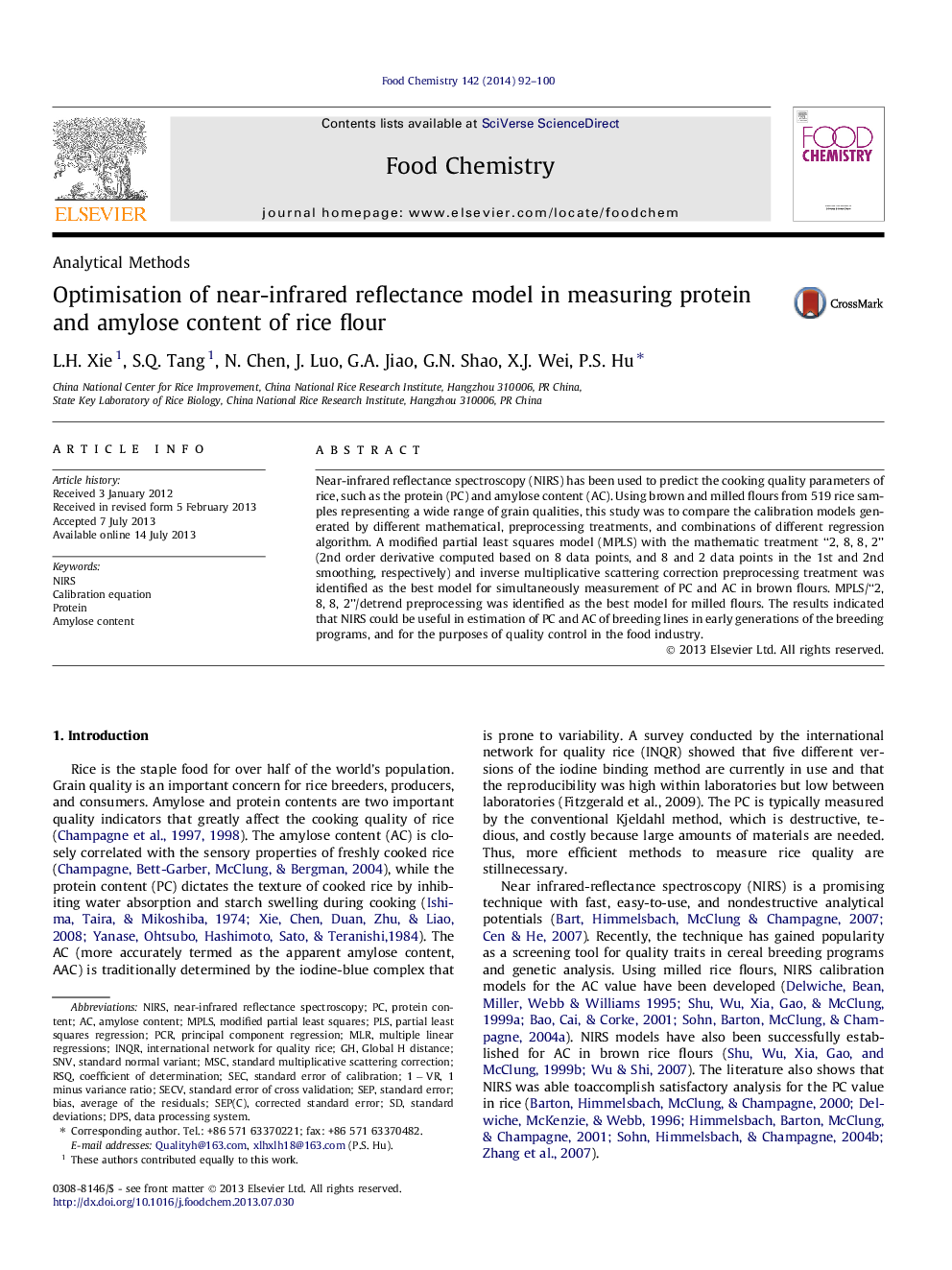| Article ID | Journal | Published Year | Pages | File Type |
|---|---|---|---|---|
| 7601260 | Food Chemistry | 2014 | 9 Pages |
Abstract
Near-infrared reflectance spectroscopy (NIRS) has been used to predict the cooking quality parameters of rice, such as the protein (PC) and amylose content (AC). Using brown and milled flours from 519 rice samples representing a wide range of grain qualities, this study was to compare the calibration models generated by different mathematical, preprocessing treatments, and combinations of different regression algorithm. A modified partial least squares model (MPLS) with the mathematic treatment “2, 8, 8, 2” (2nd order derivative computed based on 8 data points, and 8 and 2 data points in the 1st and 2nd smoothing, respectively) and inverse multiplicative scattering correction preprocessing treatment was identified as the best model for simultaneously measurement of PC and AC in brown flours. MPLS/“2, 8, 8, 2”/detrend preprocessing was identified as the best model for milled flours. The results indicated that NIRS could be useful in estimation of PC and AC of breeding lines in early generations of the breeding programs, and for the purposes of quality control in the food industry.
Keywords
SECVSEPRSQNIRSSNVDPSMSCMPLSMLRSECPLSstandard deviationsModified partial least squaresstandard errorstandard error of cross validationStandard error of calibrationPartial least squares regressionMultiple linear regressionsprincipal component regressionBiascoefficient of determinationNear-infrared reflectance spectroscopyAmylose contentProtein contentCalibration equationPCRProtein
Related Topics
Physical Sciences and Engineering
Chemistry
Analytical Chemistry
Authors
L.H. Xie, S.Q. Tang, N. Chen, J. Luo, G.A. Jiao, G.N. Shao, X.J. Wei, P.S. Hu,
